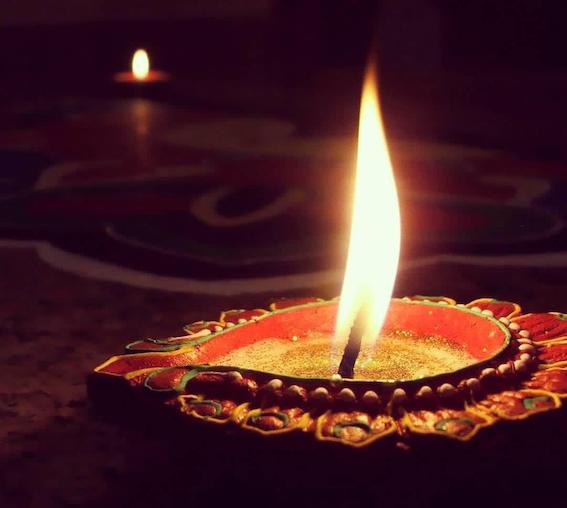Spreading happiness and good health this Diwali
This weekend Hindus, Jains and Sikhs will celebrate the biggest festival of the year; the festival of lights, also known as Diwali. As a Hindu myself, this festival is one I have been looking forward to the most, especially after the eventful year we have had. I am wishful that the lights, fireworks and diyas (traditional oil clay lamps used in celebrations) will bring happiness and light amongst the current chaos in the world. Diwali coincides with the Hindu New Year and represents the celebration of the triumph of good over evil and light over darkness. Typical Diwali traditions involves placing diyas in every room, exchanging gifts, dressing up and eating many delicacies, the latter possibly being my most favourite part! Due to the current circumstances, this Diwali will be very different to previous years, but although apart, we will pray for better days where we can celebrate with our family and friends once again- ‘the show must go on!’.
There's a place for all types of foods in our diet, and festivities are worthy of celebratory treats, especially delicious sugary barfi, rasgullas and fried savoury snacks! But it’s easy to overindulge, and with lockdown 2.0 in full swing, many of us are likely not to be moving as much as we normally do. Awareness of health, both mentally and physically, is important now more than ever, so as we convert family gatherings to virtual zoom calls, and swap mithai (Indian sweets) shopping to youtube recipes, we should take this opportunity to be mindful of the amount of sugar and salt we are consuming, especially in our homemade recipes.
Reducing your salt intake
We often underestimate how much salt we eat, which can be forgiven as a lot of it is already in the foods we buy. But reducing salt is perhaps one the most important things we can all do to improve our health. Too much salt raises our blood pressure which increases our risk of heart disease and stroke, two very serious and life threatening illnesses. Blood pressure is often referred to as the ‘silent killer’, and individuals often report feeling little to no symptoms. The recommendations are that we eat less than 6g a day, which isn’t a lot (1 level teaspoon), and so with an abundance of luxurious snacks during Diwali, it is especially important to be mindful of how much salt we add to our food, as it very quickly adds up.
It’s never too late to cut back on your salt intake, it takes on average three weeks for our taste buds to change. A common misconception is the idea that adding less salt to your food means it won’t be as tasty, however with a gradual reduction the change is often not even noticeable. So why not try reducing your salt intake dish by dish? Most often, rice is eaten with curries, dahl or as a base for biryani so you would hardly notice the absence of salt in rice. Indian food is known to be packed full of flavours, spices and aromas so use that culinary creativity to your advantage and swap salt for spices such as dhania (coriander), garam masala or jeera (cumin) to enhance each meal.
Shop bought snacks like Haldirams and Cofresh are hard to resist but come packed with added salt and fat. By making these delicious snacks at home, you are in control of the amount of salt and spices you can add. Embrace your inner chef and get creative in the kitchen by baking chaklis (crunchy spiral snack made of rice flour), papdis (crispy, flaky savoury cracker) and roasting poha (flattened savoury rice dish) instead of frying.
Reducing your sugar and saturated fat intake
Diwali is not complete without the different types of mithai, which are, of course, overloaded with sugar! Many think that mithai, which contains jaggery (cane sugar), gulkand (sweet preserve of rose petals), sugar syrup, condensed milk or honey, are healthier as they are considered to be from natural sources, but really these ingredients are all different forms of sugar and affects our bodies in the same way!
It is common to traditionally make mithai with ghee (clarified butter) or with coconut oil, making them high calorific food. Making these mithais with less sugar, other oils like rapeseed or sunflower oil which are lower in saturated fat, or even more dried fruit, would be a better option.
I know it’s hard to keep away from devouring these luscious sweets! But you can still indulge yourself in these delicacies in smaller quantities - this approach will allow you to enjoy a variety of sweets but also feel lighter and healthier.
Health and wellbeing has become the forefront of concern for everyone during these challenging times. By making these small changes during our Diwali celebrations, we are one step closer to improving our overall physical wellbeing, both now and for the future. I would like to take this opportunity to wish you all a very Happy Diwali and a prosperous Saal Mubarak (Happy New Year). I hope this blog encourages you all to make healthier changes to your Diwali celebrations whilst pertaining to our beautiful, rich Indian culture.



